This content is viewable by Everyone
How to Confirm CrashPlan Is Backing Up Your Computer
- Audience: Faculty, Staff
- Service Category: Desktop Support
- Owner Team: IT Desktop Engineering
-
Service:Computer Backup (CrashPlan)
Effective Dec. 17, 2025, UCSF IT will no longer support CrashPlan for IT-Managed Computers
CrashPlan is UCSF's online backup program. All data that is backed-up by CrashPlan is encrypted, so it will securely backup your files even when you are NOT connected to the UCSF network or UCSF VPN. This also means this solution is HIPAA-compliant. CrashPlan Pro is offered, at no additional charge, to all ITFS supported desktops and laptops as part of the ITFS Basic Support, and to UCSF Medical Center supported laptops.
Here's how you can verify that CrashPlan is installed and that it is backing up your files from your computer.
How to tell if CrashPlan is installed on your computer
- How to tell if CrashPlan is installed on your Windows PC
- How to tell if CrashPlan is installed on a Mac
- Verifying backup status in the CrashPlan application (Windows and Mac)
- Verifying backup status on the CrashPlan web interface
How to tell if CrashPlan is installed on a Windows PC
Look in your system tray (lower right corner) for the CrashPlan icon. Double click on it to open the CrashPlan application:

You can also check the Start Menu -> All Programs -> CrashPlan. Click on the CrashPlan icon to open the CrashPlan application.
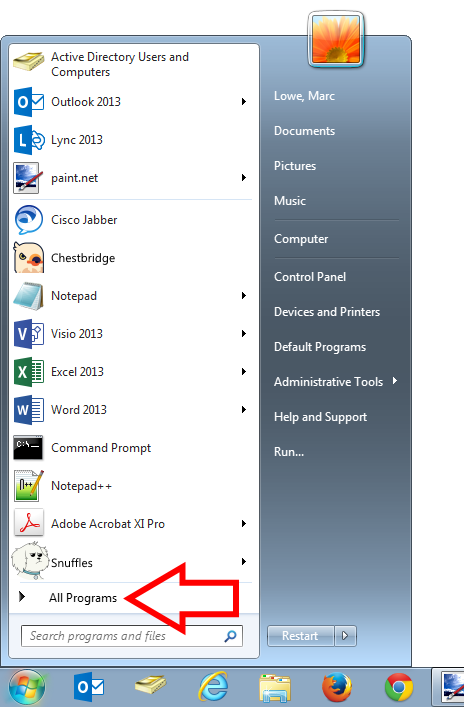

If the tray icon looks greyed out like this, it means you haven't signed in to CrashPlan and it isn't backing anything up:

Open the application by double clicking on the icon. You will enter your login and password in the next step.
How to tell if CrashPlan is installed on a Mac
Look in the menu bar (top right corner) for the CrashPlan icon. Click on the icon and select "Show CrashPlan" to show the CrashPlan application:

Or:
It may have a checkmark, which means your computer has completed a backup recently. Click on the icon and select "Show CrashPlan" to show the CrashPlan application.
If it is greyed out,ike this, it means you haven't signed in to CrashPlan and it isn't backing anything up. Click on the icon and select "Show CrashPlan" to sign in.

You can also check your Applications folder for CrashPlan. Double click on it to open the application.
![]()
Verifying backup status
Signing in to CrashPlan:
Open the CrashPlan application.
If you haven't signed in to CrashPlan on this computer before, fill in the following:

If you've signed in to CrashPlan on this computer before, you can enter your UCSF email password to log in:
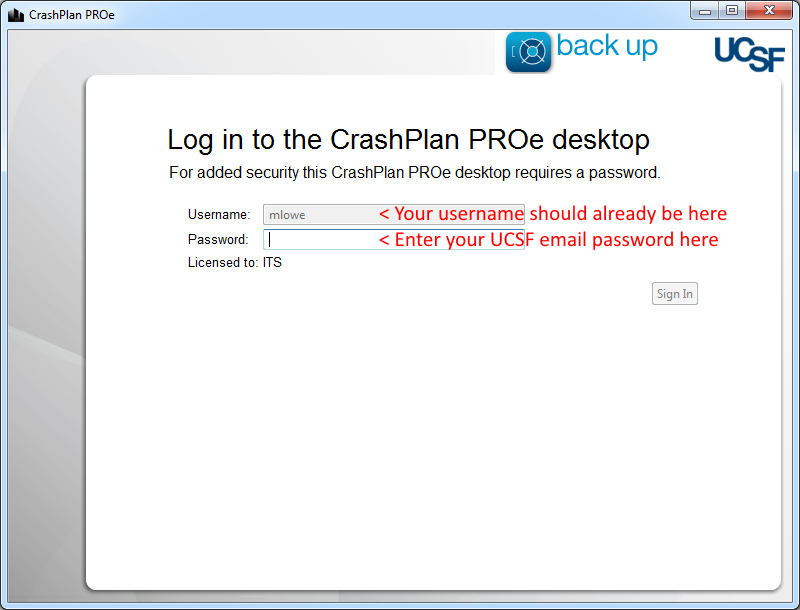
Verifying backup status in the CrashPlan application (Windows and Mac)
The CrashPlan application is identical on both Windows PCs and Macs. After you log in, you will see this screen:
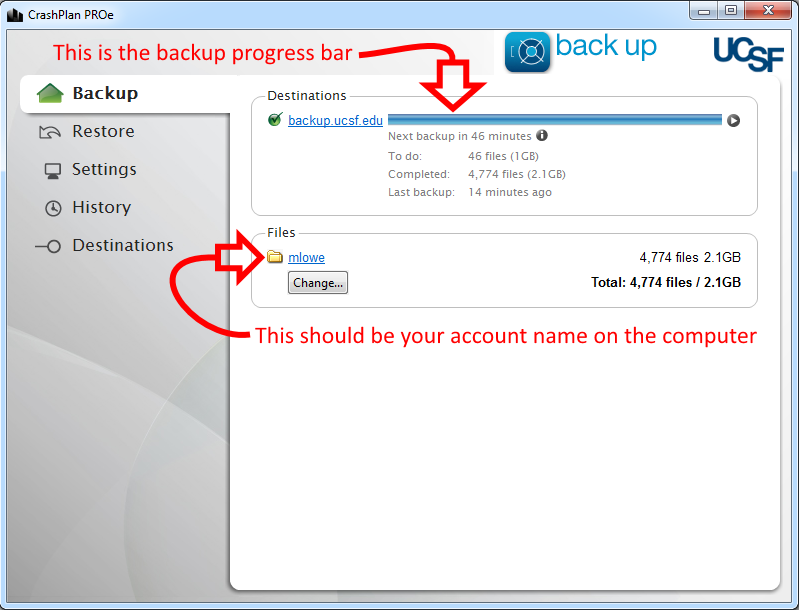
If the folder listed under "Files" isn't your user folder, click the "Change" button and select yours to back it up.
On a Windows PC this is usually:
C:\Users\your username\
On a Mac this is usually:
/users/your username/
Verifying backup status on the CrashPlan web interface
If you aren't physically at one of your computers, you can still verify the backup status via CrashPlan's web interface. We recommend using Chrome, Firefox, or Safari. The CrashPlan web interface does not load properly with Internet Explorer.
- Sign in with:
Username: your UCSF email address
Password: your UCSF email password - Click "Devices"
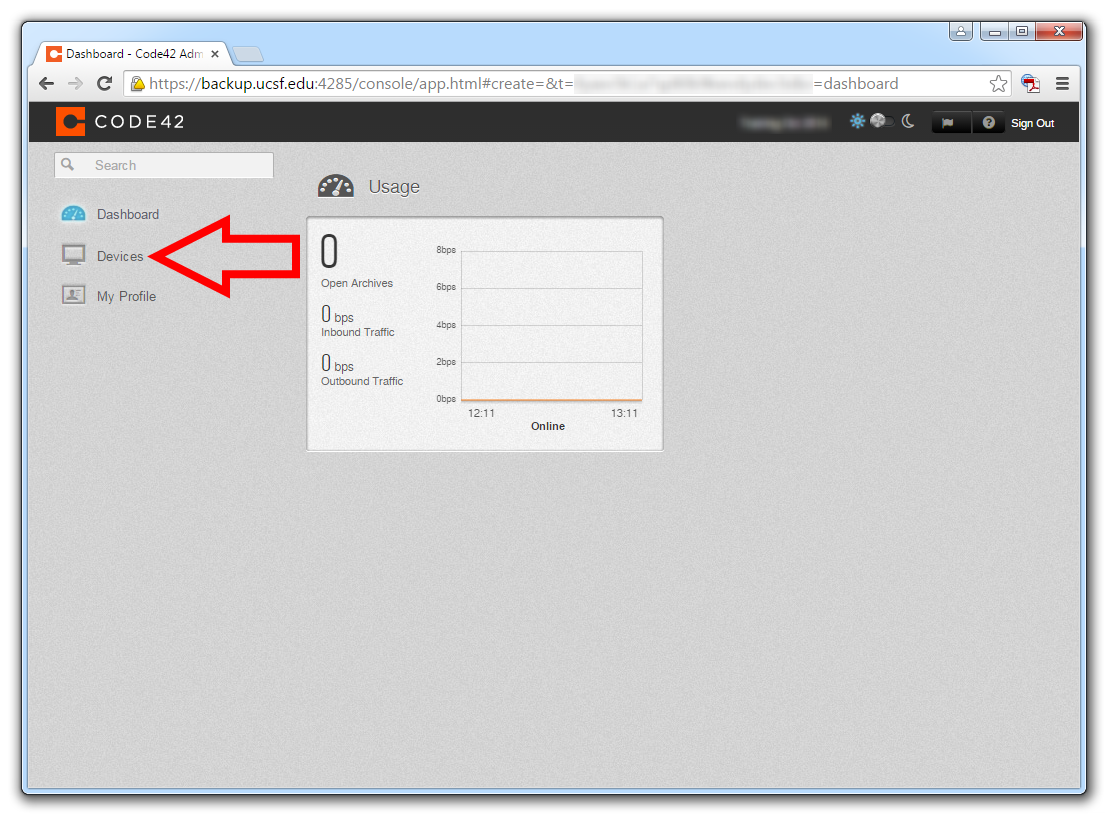
- The backup status will show up for each of your computers
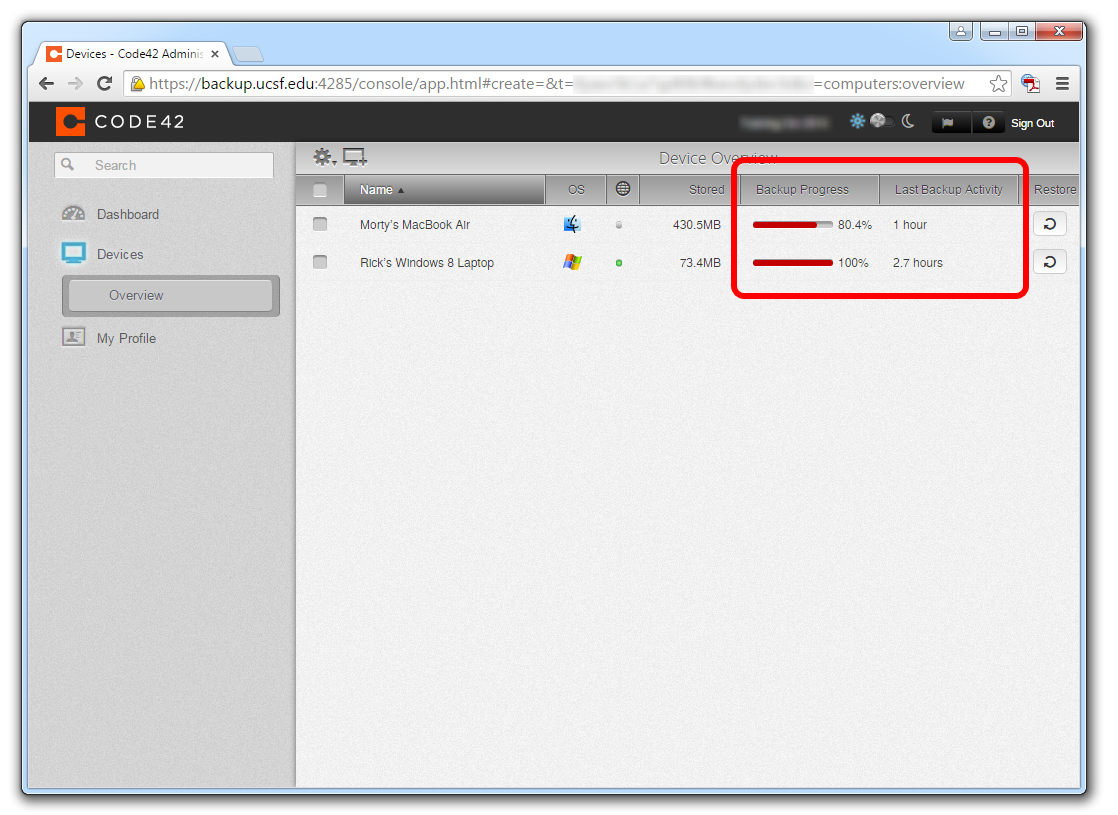
- You can click on a computer listing to show the detailed backup statistics

If you need assistance with signing in to CrashPlan, verifying the backup status, or restoring files from your backup, contact the IT Service Desk at 415-514-4100 or put in a ticket at http://help.ucsf.edu
